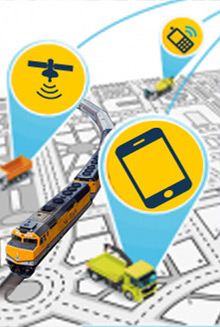“Mobilizing” Mobility
A digital transformation is brewing and it is leaving no industry out, including the auto industry. With challenges arising from consumer demands, emerging new technologies, re-distribution of global supply chains and shifts in priorities for individual suppliers, the automotive industry is turning to technologies offered by mobility, telematics, social media and analytics for innovative solutions to meet the need of the hour.
Of all the available technologies, the scope for mobility solutions in the automotive industry is far-reaching. With smartphones, consumers are able to access GPS services and accelerometer information from the palm of their hand. Mobile applications that allow users to gain insight into their cars or allow paperless monitoring at garages are already in use today. Due to the smartphone’s ability to wirelessly connect with any on-board object or device through Bluetooth, the potential for developing and tailoring applications to harness the best possible solution for any automotive dealer is extensive.
Mobility Solutions in the Real World
There is an immense amount of customer information being collected, recorded and analyzed by technology applications from various touchpoints in the automotive industry. With this the industry can move towards real-time data-driven results. Embedded technology in smartphones and vehicles enabling vehicle connectivity systems that collect and record information allows insurers to now be able to offer usage-based insurance or “pay how you drive” options where the costs depend upon the type of vehicle, time used, distance driven, location and driver behaviour. This not only reduces risk and optimizes processes for insurers but also offers a fair package and a sense of responsibility to the everyday driver.
Mobility apps can also help other players in the ecosystem. MightyAuto is a custom mobile app that allows paperless management of information collected on vehicles at garages. With the option to automate many manually driven inputs and technicalities, checks for vehicles become quick and straightforward and, most importantly, error free. This results in the ability to drive a better end-to-end customer experience and increases the quality of service delivered.
From a consumer standpoint, though, among the most widely known use cases for mobility solutions for automotivesare applications such as Uber, Ola and Tap Your Taxi, which offer consumers an easy and quick option for booking taxis for travel. These apps also provide consumers options to track a cab’s location, record a history of travel, rate the driver and cab experience and finally, cashless transactions. Mobilization of these services has promoted increased safety and convenience during travel for customers, more responsible driving by taxi-drivers and also the ability to gain visibility into traffic conditions throughout the city from data collected by GPS sensors on cars.
Looking ahead, mobility solutions have shown positive results in the auto industry. The diverse, adaptable nature of applications offers the industry an easy way to mitigate its concerns, provided the technology is integrated in the right way. According to iSuppli, a research group owned by IHS Inc., car makers are expected to sell three times the number of mobile telematics systems sold in 2017 than sold in 2009. This expectation is not unreasonable when considering the nearly 15 billion connected devices today. With the security of technological growth, one may conclude that mobile technologies could truly provide the mobility that the automotive industry needs.

Anil is a former Happiest Mind and this content was created and published during his tenure.








